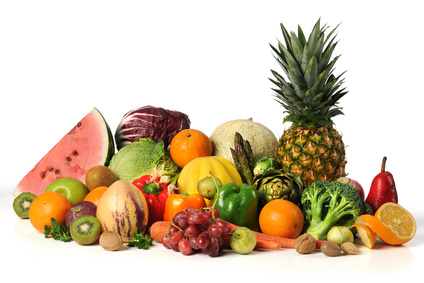Top Arthritis Foods For Strong Bones and Joints
This article is here to provide you with information about how an arthritis diet can help strengthen your bones and joints. There are approximately 10 million people in the UK alone suffering from some form of arthritis. 80% of them suffer from osteoarthritis, marked by pain in the weight-bearing joints (knees, hips, back) due to excessive wear and tear.
In general, arthritis symptoms include joint stiffness, pain, and impaired function. There are a wide range of joints and surrounding tissues that can be affected, eventually leading to joint instability, deformation, and lack of mobility if not properly managed.
Unfortunately, at this stage there is no 100% cure for any type of arthritis, including the prevalent osteoarthritis and rheumatoid arthritis.
Nevertheless, there has been significant research into combination therapies that are making living with arthritis more manageable. In addition to medications, occupational therapy, and natural supplements, more people are subscribing to an arthritis diet consciously eating more of some foods and less of others.
How Important Is Diet For Arthritis?
Like many diseases, our diet affects our body’s ability to deal with arthritis.
There are several recommendations for a working arthritis diet:
- Maintain a well-balanced diet to support general health. A poor diet will not only negatively affect arthritis symptoms, it may also accelerate the progression of the disease and make the body more susceptible to other health problems.
- Avoid fasting or crash diets that place added strain on the body
- Increase calcium intake to minimize the risk of developing osteoporosis
- Maintain healthy fluid intake, drinking plenty of water.
- Keep body weight within a healthy range. Too much weight places extra stress on the joints, especially the hips and knees.
While these are good general guidelines, any arthritis diet should also focus on reducing inflammation, strengthening bones and cartilage, and reducing oxidative stress by elevating antioxidant intake.
The Problem With Diet
Our modern diet does not supply the nutrients our joints need in sufficient quantities.
Strengthening Bones and Joints with an Arthritis Diet
Many people that suffer from arthritis are also at risk of developing osteoporosis.
Therefore, any arthritis diet foods should contain nutrients that support the strengthening of the joints and bones.
Calcium, vitamin K2 (menaquinone), vitamin D, phosphorus, magnesium, and manganese are all important nutrients that support healthy bones and joints.
Calcium is essential for maintaining bone mass.
However, for the body to effectively utilise calcium it needs the support of other nutrients.
Foods that promote strong bones & joints
Key nutrients that support calcium absorption

Sourcing the nutrients
There are essentially two ways to source the above nutrients: from high quality, whole foods or from food supplements.
On the one hand, sourcing the nutrients from whole food will guarantee that you will eat a more balanced and complete diet on the whole. On the other hand, however, it is both cost and time-intensive to ensure that all nutrients are supplied every day in sufficient dosages.
Fresh, unprocessed high quality foods need to be purchased from markets to minimise occurrence of preservatives and toxins. Of course, these pollutants in cheap food can themselves aggravate inflammation.
Food supplements are more efficient and effective at supplying the nutrients. Of course, patients should do their utmost to follow a healthy arthritis diet in any case.
Conclusion
A large number of arthritis-friendly foods have been identified and these should be preferably consumed. At the same time it is advisable to consume so-called combination joint supplements to ensure that the micro nutrients are available to the body in effective dosages.
References
- “VanItallie TB (October 2010). “Gout: epitome of painful arthritis”. Metab. Clin. Exp. 59(Suppl 1): S32–6. doi:10.1016/j.metabol.2010.07.009. PMID 20837191″ ↩
- “Puttini, P. et.al. (2005). Osteoarthritis: an overview of the disease and its treatment strategies. Seminars in Arthritis and Rheumatiodism, Volume 35, Issue 1, (pp. 1-10).” ↩
- “Verdecchia, P. et.al. (2010). Treatment strategies for osteoarthritis patients with pain and hypertension.” Therapeutic Advances in Musculoskeletal Disease, Volume 2, Issue 4, (pp. 229-40).” ↩
- “Itoh, K. et.al. (2008). A pilot study on using acupuncture and transcutaneous electrical nerve stimulation (TENS) to treat knee osteoarthritis (OA). Chinese Medicine, Volume 3, Issue 2.” ↩
- “Zhang, W. et.al. (2010). OARSI recommendations for the management of hip and knee osteoarthritis: part III: changes in evidence following systematic cumulative update of research published through January 2009. Osteoarthritis and Cartilage, Volume 18, Issue 4, (pp. 476-99).” ↩
- “Denegar, C. et.al. (2010). Preferences for heat, cold, or contrast in patients with knee osteoarthritis affect treatment response. Clinical Interventions in Aging, Volume 5, (pp.199-206).” ↩
- “Turley, M. et.al. (2006) Non-fatal disease burden associated with excess body mass index and waist circumference in New Zealand adults. Australian and New Zealand Journal of Public Health, Volume 30, Issue 3, (pp. 231-237).” ↩
- “Kanpen, M. et.al. (2013).Three-year-low-dose menaquinone-7 supplementation helps decrease bone lose in healthy postmenopausal women. Osteoporosis International. Volume 24, Issue 9, (pp. 2499-507).” ↩
- “Cockayne, S. et.al. (2006). Vitamin K and the prevention of fractures: systematic review and meta-analysis of randomized controlled trials. Achieves of Internal Medicine, Volume 166, Issue 12, (pp. 1256-61).” ↩
- “Ishida, Y. (2008). Vitamin K2. Clinical Calcium, Volume 18, Issue 10, (pp. 1476-82).” ↩
- “Strause, L. and Saltman, P.(1987). “Role of Manganese in Bone Metabolism.” In: Nutritional Bioavailability of Manganese. American Chemical Society, (pp. 46-55).” ↩
- “Castiglioni, S. et.al. (2013). Magnesium and Osteoporosis: Current State of Knowledge and Future Research Directions. Nutrients. Volume 5, (pp. 3022-33).” ↩
- “.Rheaume-Bleue K. (2011). Vitamin K2 and the Calcium Paradox: How a Little-Known Vitamin Could Save Your Life. 1st ed. Ontario, Canada; Wiley.” ↩

 This vitamin plays a key role in calcium metabolism, with several studies confirming that menaquinone is important for protecting bone health
This vitamin plays a key role in calcium metabolism, with several studies confirming that menaquinone is important for protecting bone health




